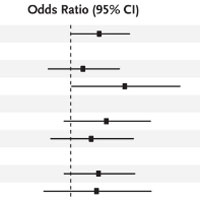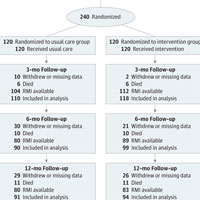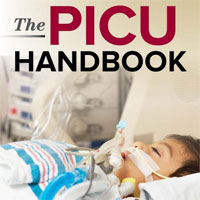Tag: nutrition

Intensive vs. Conventional Glucose Control in Critically Ill Patients
n this large, international, randomized trial, we found that intensive glucose control increased mortality among adults in the ICU: a blood glucose target of 180 mg or less per deciliter resulted in lower mortality than did... read more

Safety and Efficacy of VBF in Critically Ill, Mechanically Ventilated Adults Using the PERFECT Protocol
Underfeeding in critical illness is common and associated with poor outcomes. According to large prospective hospital studies, volume-based feeding (VBF) safely and effectively improves energy and protein delivery to critically... read more

Continuous or Intermittent Feeding: Pros and Cons
Although there are limited studies investigating the safety and efficacy of an intermittent rather than continuous feeding regimen in critically ill adults, there are several theoretical advantages. Further studies should... read more

Long-term Health Consequences of Under- and Over-feeding in PICU
Energy is essential for the treatment and recovery of children admitted to Pediatric Intensive Care Units (PICU). There are significant immediate and long-term health consequences of both under- and over-feeding in this population.... read more

Ideas for Future Intensive Care
Progress toward determining the true worth of ongoing practices or value of recent innovations can be glacially slow when we insist on following the conventional stepwise scientific pathway. Moreover, a widely accepted but... read more

Pharmacotherapy in Neurointensive Care
Neurointensive care medicine has experienced great advancements and developments of neuromonitoring techniques, allowing a better comprehension of acute brain injury early phase pathological mechanisms and an overall improvement... read more

How to Deal with Severe Acute Pancreatitis in the Critically Ill
Management of severe acute pancreatitis (SAP) is multimodal with emphasis on monitoring, adequate fluid resuscitation, avoiding prophylactic use of antibiotics, cause-directed procedures or treatment, and organ support. There... read more

A Randomized Trial of Glutamine and Antioxidants in Critically Ill Patients
Critically ill patients have considerable oxidative stress. Glutamine and antioxidant supplementation may offer therapeutic benefit, although current data are conflicting. In this blinded 2-by-2 factorial trial, we randomly... read more

Expanding the Differential for Hypotension in the Pediatric Patient
As many ED practitioners are aware, food allergies are common in the first 2 years of life, with a prevalence cited between 1-10% of the population. Most food allergies are IgE-mediated hypersensitivity reactions. Food protein-induced... read more

Increased Hospital-Based Physical Rehabilitation and Information Provision After ICU Discharge
Post-ICU hospital-based rehabilitation, including increased physical and nutritional therapy plus information provision, did not improve physical recovery or HRQOL, but improved patient satisfaction with many aspects of recovery.... read more

The PICU Handbook
The PICU Handbook is a unique, portable compilation of the information essential for residents and fellows to successfully navigate the modern Level 1 and Level 2 pediatric intensive care unit (PICU). Enhanced by numerous... read more

Associations of Dietary Cholesterol or Egg Consumption With Incident Cardiovascular Disease and Mortality
Among US adults, higher consumption of dietary cholesterol or eggs was significantly associated with higher risk of incident cardiovascular disease (CVD) and all-cause mortality in a dose-response manner. 29,615 adults pooled... read more

Patient-important outcomes in randomized controlled trials in critically ill patients
Patient-important outcomes are rarely primary outcomes in RCTs in critically ill patients published in 2013. Among them, mortality accounted for the majority. We promote the use of patient-important outcomes in critical care... read more

Nutrition Support for the Critically Ill
This text provides a review of the current knowledge in both the mechanics of nourishing the critically ill and the metabolic and immunological roles nutrients play. In-depth chapters discuss disease-related malnutrition... read more




